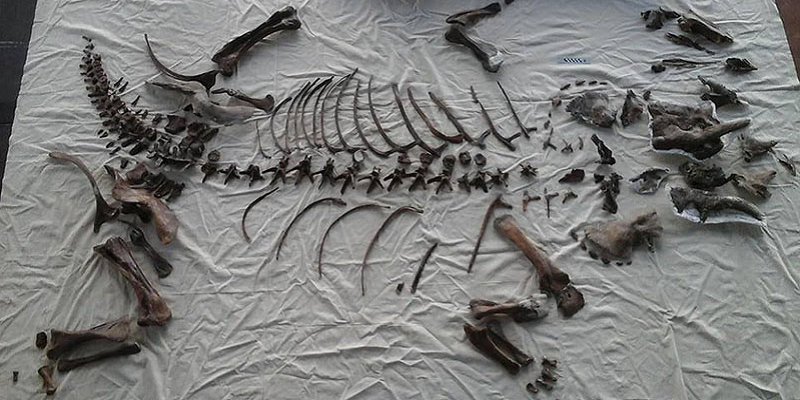If you work at Triebold Paleontology, Incorporated, you may already have the job that every little kid dreams of having. Triebold is a company dedicated to the preservation of vertebrate fossils and the creation of museum-quality exhibits and the preparation, restoration, molding, casting, and mounting of specimens. As such, they employ droves of specialists from model makers to paleontologists. In other words, they specialize in all things specimen – great, small, rare, and fundamental – and they have been doing so for nearly a quarter of a century.
This particular ceratopsian has no formal scientific name as of yet, but those who know her best call her ‘Ava.’ The nearly complete original fossil skeleton was scanned and any missing pieces were recreated on a 3D printer based on laser scan data data. The researchers were lucky in that nearly every missing piece had a representative counterpart from the other side still present leading to the creation of a highly accurate specimen.
“Reconstruction and mounting the specimen involved laser scanning and 3D printing the few missing portions of the specimen,” the Triebold team said in a release. “Practically every missing portion was represented by its match from the other side, enabling precise restoration through digital mirror-imaging of 3D models and 3D printing the mirrored models. The skull was finished and placed on exhibit earlier but this is the first time the fully restored Late Cretaceous ceratopsian will have been assembled as a complete dinosaur skeleton.”
Before they could begin 3D printing the missing pieces, the paleontological team was searching through the sand in Harding County, South Dakota in a formation uncompromisingly named Hell Creek. As pulled from the ground, the skeleton was nearly 80% complete and even bore traces of skin impressions.
Despite being a sizable creature, this new creature was actually relatively small in comparison to the other members of the ceratopsian family. The skull measures just over a meter in length, meaning you wouldn’t want one of these greeting you happily at the door after a long day of work.
This is just one of the many instances in which 3D printing has been used to help in both the collection of paleontological data and its dissemination either to specialists or to the general public. If a picture is worth a thousand words, than a 3D print is worth any number of pictures in the sense that it can be easily shared, manipulated, and bring back to life the stories of animals long extinct.
Let’s hear your thoughts on this story here.
